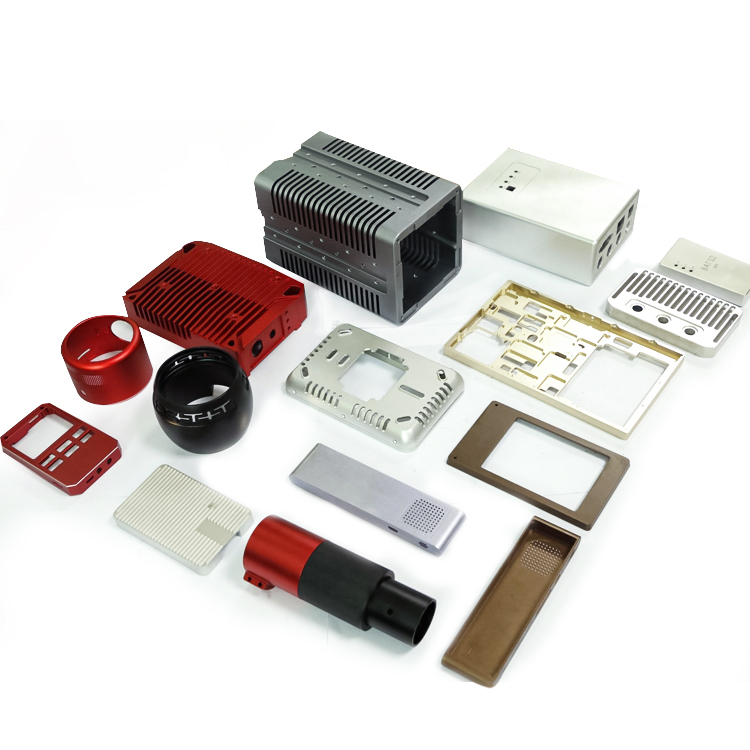15 years one-stop China custom CNC machining parts factory

Hey there I’m VMT Sam!
With 25 years of CNC machining experience we are committed to helping clients overcome 10000 complex part-processing challenges all to contribute to a better life through intelligent manufacturing. Contact us now
 136 |
Published by VMT at Jan 12 2024
136 |
Published by VMT at Jan 12 2024
Introduction:
In the manufacturing industry, the widespread application of aluminum casings, known for their lightweight, aesthetic appeal, and durability, makes the surface treatment process pivotal in meeting customer demands, ensuring product quality, and reducing costs during custom aluminum CNC machining. This article delves into effective strategies for surface treatment control in the custom aluminum CNC machining process to meet customer requirements, prevent defects, and optimize production costs.

I. Significance of Surface Treatment Control:
In the custom CNC machining process of aluminum casings, surface treatment stands out as a crucial factor influencing product quality and customer experience. Effective surface treatment control ensures that the appearance, corrosion resistance, and functionality of aluminum casings meet customer expectations and requirements. Furthermore, robust surface treatment control contributes to reducing defects, lowering production costs, enhancing production efficiency, and ultimately strengthening the company's market competitiveness.

II. Strategies and Practices for Surface Treatment Control:
Understanding Customer Requirements:
Clearly define customer expectations regarding surface treatment during custom aluminum CNC machining. Through thorough communication, grasp their requirements for appearance, performance, and usage, enabling the formulation of corresponding surface treatment plans.
Developing Surface Treatment Processes:
Based on customer needs and the characteristics of aluminum materials, develop a rational surface treatment process. This includes arranging pre-processing, chemical treatment, electroplating, and coating steps, ensuring the aluminum casing surface meets the expected quality standards.
Selection of Equipment and Tools:
Choose equipment and tools suitable for surface treatment of aluminum casings, ensuring stability, high precision, and durability. Regularly maintain and service equipment and tools to ensure their proper functioning, avoiding compromises in surface treatment quality due to equipment failure or tool wear.
Strict Control of Treatment Parameters:
Rigorously control various treatment parameters such as temperature, time, concentration, current, and voltage during the surface treatment process. Adjusting these parameters optimizes the surface treatment effect, enhancing the appearance and performance of aluminum casings. Regularly fine-tune parameters based on actual production conditions to improve production efficiency and reduce costs.
Quality Inspection and Control:
Establish a comprehensive quality inspection and control system to rigorously check the surface treatment quality of aluminum casings. Through sampling and full inspections, evaluate aspects such as appearance, corrosion resistance, adhesion, and functionality, ensuring products meet customer requirements and industry standards. Promptly address non-compliant products through rework or disposal to prevent the circulation of defective items in the market.
Personnel Training and Management:
Strengthen training and management of personnel involved in surface treatment. Elevate their skill levels and sense of responsibility through regular technical exchange and training activities. Familiarize employees with surface treatment processes, equip them with operational skills, and enhance their understanding of quality requirements. Simultaneously, establish a sound production responsibility system and incentive mechanism to encourage employee participation in quality improvement activities, ultimately improving production efficiency and product quality.
Continuous Improvement and Innovation:
In the custom CNC machining of aluminum casings, continuously monitor industry trends and technological developments. Persistently improve and innovate surface treatment processes by introducing advanced techniques and equipment. Optimize existing process flows and enhance production efficiency. Actively engage in industry exchanges and collaborations to explore new ideas and methods for quality control, driving technological advancements across the industry.
Cost and Benefit Analysis:
When formulating surface treatment control strategies, conduct a comprehensive analysis of costs and benefits. While ensuring customer satisfaction, reduce costs through optimized process flows, decreased material consumption, and improved production efficiency. Maintain a balanced relationship between quality and costs, avoiding excessive pursuit of high quality that may lead to cost inefficiencies.
Quality Records and Traceability:
Establish a thorough quality records and traceability system for the entire custom CNC machining process of aluminum casings, particularly the surface treatment stage. Monitor and record processing parameters, operators, and timing for each stage. These records facilitate problem tracing and quality improvement. Additionally, they provide valuable data support for assessing the efficiency and benefits of the surface treatment stage.
Environmental and Safety Awareness:
Emphasize environmental protection and safety in the custom CNC machining process of aluminum casings. Adequately control the storage and use of chemicals, minimizing waste generation and environmental pollution. Strengthen safety measures for equipment and provide regular safety training for employees to ensure a secure and healthy production environment.

III. Conclusion:
In conclusion, effective surface treatment control in the custom aluminum CNC machining process is crucial for meeting customer demands, reducing costs, and improving product quality. The application of a comprehensive set of measures, including understanding customer requirements, developing suitable processes, selecting appropriate equipment, and continuous improvement, ensures a superior surface treatment effect that aligns with customer expectations. Companies should remain vigilant to industry dynamics and technological developments, driving ongoing improvements and innovations in surface treatment processes to adapt to changing market demands and enhance competitiveness.
Ready To Start Your Next Project?
Get Instant Quote

Request a Free Quote
Send us a message if you have any questions or request a quote. We will get back to you ASAP!